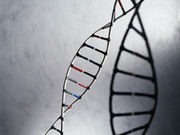Findings based on use of 31-gene profile along with an online survival prediction tool
THURSDAY, April 27, 2017 (HealthDay News) — A validated 31-gene expression profile (GEP) signature improves identification of patients with melanoma at high risk of metastasis when used in combination with the American Joint Committee on Cancer (AJCC) outcome prediction tool, according to a study published in the May issue of the Journal of the American Academy of Dermatology.
Laura K. Ferris, M.D., Ph.D., from the University of Pittsburgh Medical Center, and colleagues compared the accuracy of the GEP in combination with risk determined using the web-based AJCC Individualized Melanoma Patient Outcome Prediction Tool for 205 stage I/II cutaneous melanomas.
The researchers found that there was significant risk classification of distant metastasis-free and overall survival (hazard ratio, range 3.2 to 9.4) for both tools in Cox univariate analysis. Using a five-year overall survival cutoff of 79 percent, 43 cases (21 percent) had discordant GEP and AJCC classification. Of the 13 deaths in that group, 11 were predicted as high-risk by GEP but low-risk by AJCC.
“The GEP provides valuable prognostic information and improves identification of high-risk melanomas when used together with the AJCC online prediction tool,” conclude the authors.
Several authors report financial ties to Castle Biosciences, which provided financial compensation to the centers that contributed cutaneous melanoma tissue to the study.
Copyright © 2017 HealthDay. All rights reserved.








